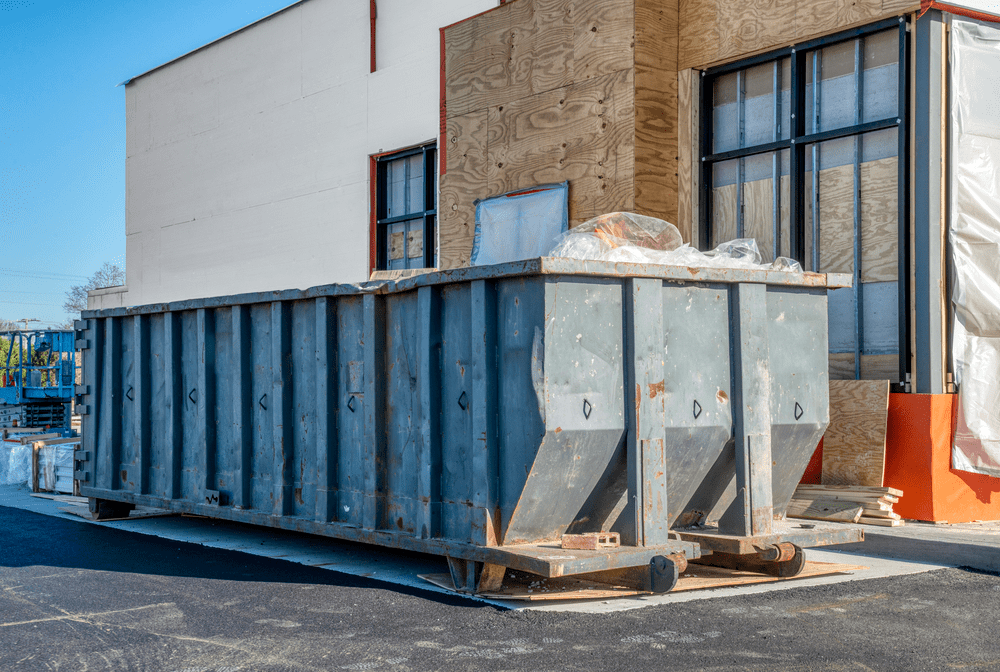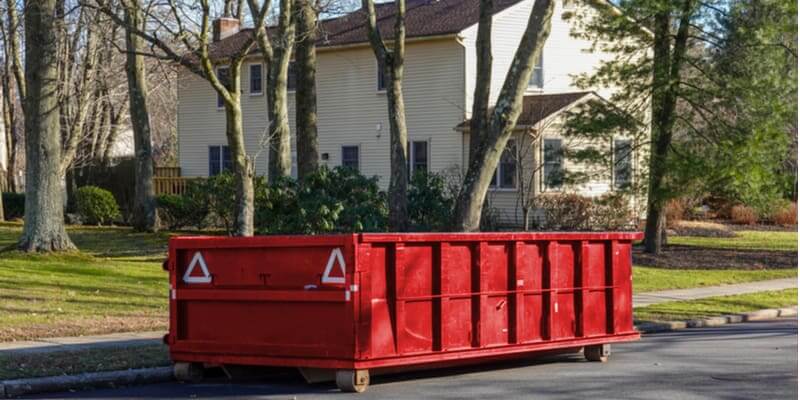When renting a dumpster for a home renovation, clean-up, or construction project, understanding the need for a permit is crucial.
In many areas, a permit is required if the dumpster is placed on public property, like a street or sidewalk.
This guide will help you navigate the process of obtaining a dumpster permit, ensuring compliance with local regulations for a smooth project.
How to get a permit for a dumpster?
To get a permit for a dumpster, contact your local municipality or waste management service. You may need to fill out a form and pay a small fee, depending on where you live.
Key Takeaways
- In many cities, a permit is necessary to place a dumpster on public property, including sidewalks and streets.
- The requirements and costs of a dumpster permit vary depending on your location.
- Obtaining the right permit can prevent fines and delays during your project.nbsp;
Why Do You Need a Dumpster Permit?

The need for a dumpster permit depends on where the dumpster is placed. If you're placing the dumpster on your own private property, you typically don't need a permit.
However, if you're planning to place the dumpster on a public street or sidewalk, you’ll likely need a permit. Here’s why:
Safety: A permit ensures that the dumpster doesn’t block traffic, pedestrian walkways, or create other safety hazards.
Regulations: Local municipalities have regulations about where dumpsters can be placed to ensure they don’t interfere with emergency services or create eyesores in public spaces.
Environmental Concerns: A permit may help ensure that waste is being disposed of correctly and in compliance with environmental regulations.
When Do You Need a Permit for a Dumpster?
The need for a permit typically depends on the location where the dumpster will be placed. Here are the most common scenarios where you may need a permit:
Placing a Dumpster on the Street

If you need to place your dumpster on the street or any public space, a permit is almost always required. This is because the dumpster can obstruct traffic or cause inconvenience to the public.
Example: If you are renovating your home and need to place a dumpster in front of your property on the street, you will likely need to apply for a permit from your local city or town hall.
Placing a Dumpster on a Sidewalk
If the dumpster is to be placed on a sidewalk or another public space, a permit is required to ensure that pedestrians can safely navigate around the area without obstruction.
Example: A dumpster placed on a sidewalk may block pedestrian traffic, so the permit will specify the location and whether you need to use barriers or signs to alert pedestrians to the obstruction.
Larger Construction Projects
If you're working on a large-scale construction or demolition project, a permit is generally required, even if the dumpster is placed on private property.
In such cases, the city may want to monitor the type of waste you're disposing of and ensure proper waste management practices.
Example: A major construction project in cities like New York or Los Angeles will require you to obtain a permit to keep the project compliant with zoning laws and waste disposal guidelines.
How to Apply for a Dumpster Permit
Now that you understand when you need a dumpster permit, here’s a step-by-step guide on how to apply for one.
Step 1: Contact Your Local Municipality
The first step is to contact your local government office or municipality to inquire about the permit application process.
You can usually do this online through the city or county website. If it’s not available online, call the local building or public works department to get the details.
Tip: Different areas have different regulations, so it’s important to check with your local authorities to get the most accurate and up-to-date information.
Step 2: Fill Out the Permit Application
Once you have the necessary information, you’ll need to fill out a permit application form. This form typically requires the following details:
Your name, address, and contact information. The exact location where the dumpster will be placed (including whether it’s on the street, sidewalk, or private property).
The size of the dumpster and the duration it will be placed at the location. The dates when the dumpster will be needed.
Tip: Some municipalities may require you to provide a map or diagram showing the location of the dumpster in relation to your property and the surrounding area.
Step 3: Submit the Application and Pay Fees
After filling out the application, submit it to your local municipality. In most cases, there will be a fee for processing the permit application.
The fees can vary depending on the location and duration of the dumpster placement.
Tip: Fees may vary from $20 to $100 or more, depending on your location and the size of the dumpster.
Step 4: Wait for Approval
After submitting your application, you will need to wait for approval.
The approval process can take anywhere from a few days to several weeks, depending on the local government’s procedures and workload.
Make sure to apply well in advance of when you plan to use the dumpster to avoid delays.
Tip: If the dumpster will block a significant amount of space or disrupt traffic, the approval process may take longer, as the city may need to assess traffic flow and pedestrian safety.
Step 5: Place the Dumpster and Display the Permit
Once your permit is approved, you will be able to place the dumpster in the designated area.
Some municipalities require you to display the permit on the dumpster, so make sure to attach it in a visible spot.
If your dumpster is placed on a street or sidewalk, you may also need to place traffic cones or barriers around the dumpster to ensure safety.
Tip: Make sure you comply with all local rules regarding the placement of your dumpster, including posting signs or barriers if required.
Frequently Asked Questions
1. How long does it take to get a dumpster permit?
The approval process can take anywhere from a few days to a few weeks, depending on your local municipality. Make sure to apply well in advance of when you need the dumpster.
2. How much does a dumpster permit cost?
The cost of a dumpster permit varies by location, but it generally ranges from $20 to $100, depending on the size of the dumpster and the duration of its placement.
3. Can I place a dumpster on my private property without a permit?
In most cases, you do not need a permit if the dumpster is placed on your private property. However, some local regulations may require a permit for larger projects or if the dumpster obstructs driveways or public walkways.
Conclusion
Getting a permit for a dumpster is an essential step in ensuring that your project is compliant with local regulations.
Whether you're clearing out your garage or working on a major construction project, knowing when and how to obtain a dumpster permit will save you from potential fines and delays.
Always check with your local government to ensure you follow the correct process and have the right documentation in place.
By taking these simple steps, you can avoid complications and make your project go smoothly.

